The Cooler Master MasterCase 5 Review
by E. Fylladitakis on August 27, 2015 9:00 AM EST- Posted in
- Cases/Cooling/PSUs
- Cooler Master
- mid-tower
- Case
- Freeform
Test Setup
Professional testing requires the emulation of real-world situations but with repeatable results; thus, a perfectly controllable test setup and environment are required, especially for comparable results. Testing the thermal performance of any case with a typical real-world setup technically limits the comparability of the results to this setup alone, as an active system interacts with its environment and the change of a single component would alter myriads of variables. As such, we developed synthetic loads that emulate the thermal output of real systems, which however are passive, steady and quantifiable. As such, the thermal testing now displays the thermal capabilities of the case alone, as if it would have to deal with the entire thermal load by itself, regardless of the system that would be installed inside it. Laboratory data loggers are being used to monitor the PT100 sensors and control the safety relays, which are fully accessible via our custom software. Three such loads have been developed; the ATX version simulates a 200W CPU, 50W VRM, 30W RAM and 4 × 120W GPU card thermal load. Finally, three 3.5" HDD dummy loads have also been created, with each of them converting 30 W of electrical power to thermal, bringing the total thermal load of the ATX test setup up to 850 Watts. As such, the thermal load is immense and only the best of cases will be able to handle it for more than a few minutes, we are also performing a test with a thermal load of 400W, with all of the aforementioned components except the HDD drives at about 42% power, which is more suitable for the majority of cases.
Thermal testing has been performed with all of the case's stock fan operating at maximum speed. Noise testing has been performed with a background noise level of 30.4dB(A). Advanced noise testing is also being performed, in order to assess the ability of the case to dampen the noise of the components installed inside it. This includes the installation of two noise-generating sources (strong fans) inside the case, one positioned approximately over the first expansion slot and one over the CPU area, which generate ≈ 44.2 dB(A) when unobstructed. During the advanced noise test, all stock cooling options of the case are entirely disabled.
Results and Discussion
Taking into account the size and design of the MasterCase 5, we anticipated that it would perform about as well as any good Midi-ATX tower. Its primary sales point, the modular design, is not something that could directly affect thermal performance. Still, it is a well-ventilated case and thus it is not lacking in comparison with the competition, offering similar thermal performance as other high performance designs. It falls just a little behind the Phanteks Enthoo Pro, a case that has about the same volume as the MasterCase 5. Both the Corsair 450D and the SilverStone Fortress FT05 outperform the MasterCase 5 by a few degrees, but both of these cases come with superior stock cooling solutions as well.
The two stock cooling fans of the Cooler Master MasterCase 5 are deceptively loud for their size and type. They are not ear bursting but we expected to see lower sound pressure figures than these. This is not entirely due to bad quality or overly powerful fans however. A large portion of the noise comes from the aerodynamic drag caused by the vents and case components. In other words, the air moved by the fans through the grills/vents is causing the high sound pressure levels. When the speed of the fans is halved, where the air pressure is very low, there is virtually no audible sound at all.
The lack of sound dampening capabilities enhances this problem. With so many openings and vents, the MasterCase 5 is unable to significantly dampen any noise source inside of it. Although the fan's noise tests hinted this, our second test using the dummy test source verified it. The MasterCase 5 reduced the sound pressure generated by our dummy noise source by just 1.3 dB(A), from 44.2 dB(A) to 42.9 dB(A). This is a very small and indiscernible difference for a human ear.


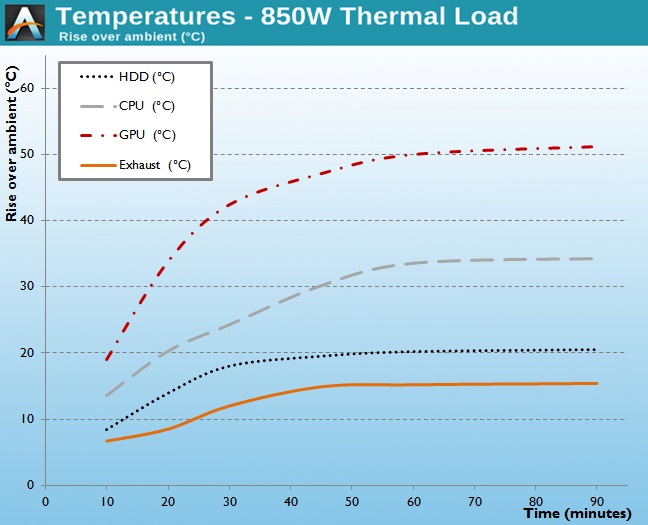
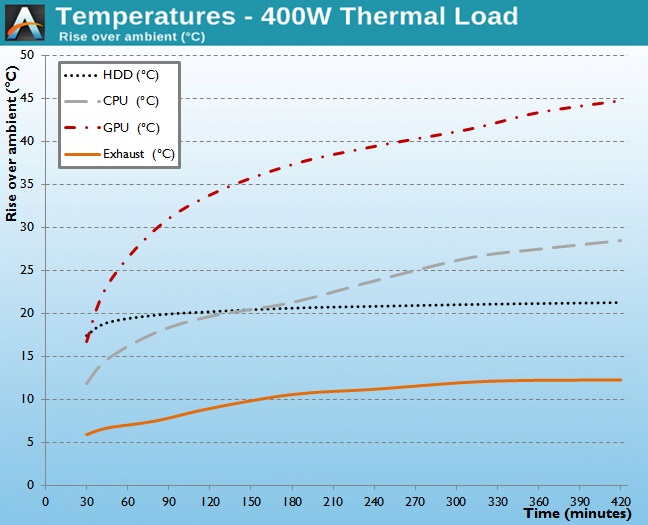
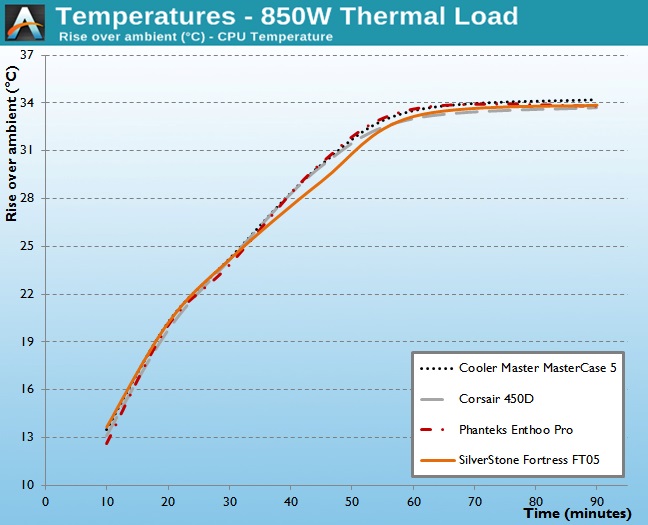
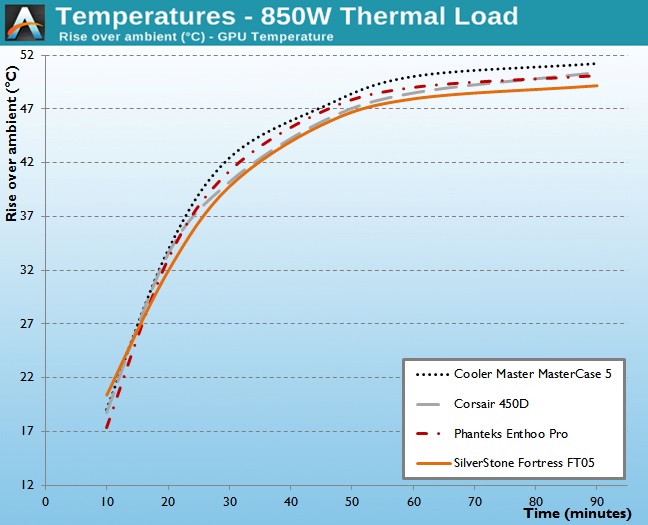
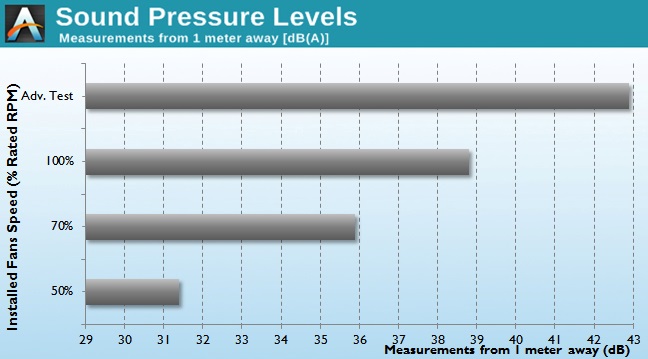








32 Comments
View All Comments
winterlord - Thursday, August 27, 2015 - link
how much does it weigh?BrokenCrayons - Thursday, August 27, 2015 - link
From the second page of the review - "It also tipped our scale at 10.4 kg, making it a fairly heavy case for the size."nmm - Thursday, August 27, 2015 - link
From where I'm sitting their "modular" approach looks a bit like they're just selling you a case that doesn't come with all the parts. I'm pretty sure my Fall Sky Lake build is still going into a Fractal Design Define R5 (or perhaps a Define Mini if they ever get around to updating it... and if anyone ever releases a micro ATX board that isn't riddled with useless SATA Express ports).freeskier93 - Thursday, August 27, 2015 - link
I'm sure the designers/engineers know very well what countersinking is, so well they also know countersinking into such thin sheet metal is not a good method. Even at a large 130* countersink there would be very little surface contact between the sheet and fastener.E.Fyll - Thursday, August 27, 2015 - link
The openings are made for screws with countersunk heads and the thin sheet metal, even with fans attached, has no weight that would cause problems with such screws, even if the contact surface is small.Besides, the thin sheet sits on the metallic frame and gravity does not go up.
freeskier93 - Thursday, August 27, 2015 - link
Taking a closer look at the pictures it looks they are dimpled, which would be the better method, so it is odd they used a big cheese head screw.'nar - Thursday, August 27, 2015 - link
I have to agree with the reviewer, and here are some reasons why. You can expand a case in any direction with optional components, except the rear panel with the motherboard connections. The top can not only have a radiator, but also padded external drive bays, Flash drive USB ports, additional buttons, fans controls, lighting controls, and such. The front can have a metal frame that screws to the existing frame to extend the case with new drive bays, radiator options, a closing door, thicker sound insulation and filtration. The bottom could have an additional power supply for high-power rigs and more drive bays. And the side panels could come with different window shapes and embedded lighting options, sleeves for the motherboard manual, hangars for headphones, or art-deco. This would all be designed to bolt onto a standard core frame size, so your core can be swapped for different configurations as well.Sounds good, but I have not made any CAD drawings to check any sizes or clearances to see if any of this would actually fit together in any aesthetically pleasing way. But I do desire a case with good sound absorption and air-filtration, water cooling, and hot-swap hard drive bays.
Taurus229 - Thursday, August 27, 2015 - link
If I were to spend $110.00 on a case I would want it to have what I feel is important to me, and not have to consider buying accessories to upgrade. Either it has it or it doesn't. It's that simple.sonny73n - Friday, August 28, 2015 - link
All PC cases lack of something very important to me - dust filter. I'm talking about real air filter, the one you have in your car, not some foam. Foam air filters can't block fine dust which in about a year will build up a nasty layer of dust on everything, especially on the fans and CPU heatsink. I had to modify my Antec case with 3 fans sucking air in from the front, behind a modified washable car air filter, and 3 blowing air out on top, side and back. It's been almost 2 years and no dust. No more worries of system overheats and annual cleanup caused by dust buildup on my OCed system. Yay ;-)marvdmartian - Friday, August 28, 2015 - link
Not sure....what exactly is the reason for handles on top of a case this size? Is it just for the coolness design factor? Haven't seen a LAN party in years, but I doubt people are lugging around cases like this much, any more.While it might have some nice features, for me, at least, the price point is too high, for what it's offering.